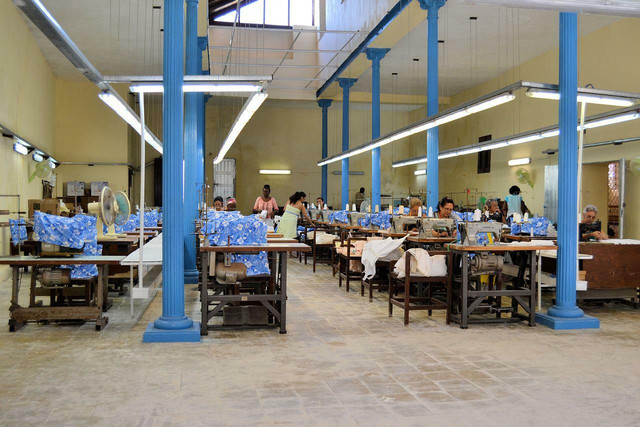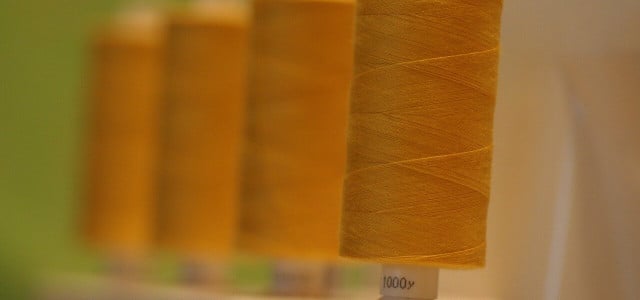Polyester is a synthetic material primarily used to make clothing. We’ll discuss what polyester is made of and the environmental impact that it has.
Polyester, also known as polyethylene terephthalate, is a manufactured synthetic fiber made from a chemical reaction involving petroleum, air and water. Polyester is thermoplastic, meaning it can be melted and reformed. To make polyester, chemists melt polyester pellets and force them through small holes called spinnerets. Polyester fibers solidify as they exit the spinnerets, and the continuation of this process produces the material we recognize as polyester.
Although some polyester is still manufactured in the U.S., most manufacturing is currently done in countries like China, Indonesia, Taiwan and Japan, as labor in these countries is cheaper. Working conditions are often unsafe, and environmental regulations are lax — one of the many downsides of fast fashion. Though primarily used in the fashion industry, polyester also has industrial uses and is frequently used to make carpets, ropes and more.
The Environmental Effects of Polyester



The fashion industry accounts for 10 percent of global carbon emissions and is the second-largest industrial polluter after oil. Some of the environmental impacts that polyester manufacturing has on the environment include:
- It leads to overproduction and waste. Polyester made up 52 percent of global fiber production in 2018, with 55 million tons produced annually. Polyester is easy and cheap to manufacture compared to natural fibers such as cotton, so it is often overproduced. In the U.S. alone, 11.3 million tons of textile waste is thrown away each year.
- It uses fossil fuels. Polyester is generally made from PET derived from crude oil and natural gas. Nearly 70 million barrels of oil are used annually to meet polyester demand. Polyester manufacturing also releases lots of greenhouse gases, and 5.5kg of carbon dioxide is released for every polyester shirt created. In comparison, just 2.1kg of greenhouse gas is emitted to produce a cotton shirt.
- It is non-recyclable and non-biodegradable. Polyester clothes end up in landfills, and the material takes hundreds of years to biodegrade. It also sheds synthetic “fluff” — roughly 176,500 tons of synthetic microfibers are released into the environment every year, primarily from polyester. Humans and animals breathe, drink and eat these synthetic fibers, damaging our health and the environment.
Are There Any Benefits to Polyester?



Although polyester is undeniably damaging to the environment, some argue that other materials are just as damaging. For example, cotton is the most pesticide-intensive crop in the world.
One advantage of polyester is that it is durable and resistant to many chemicals. It can be dyed, and the material is lightweight, retains its shape well and is not likely to shrink. This makes it an excellent material to use in the fashion industry; as polyester is unlikely to shrink, it is simple to care for and wash.
If you want to buy garments made of polyester, it is most sustainable to buy secondhand clothes. That way, you do not contribute to more polyester production.
Read on:
- Banana Fiber: The Material for Sustainable Fashion From Tree Waste?
- Minimalist Wardrobe: Closet Clearing Tips and Tricks
- What to Do With Old Clothes: 10 Impactful Ideas
Do you like this post?









